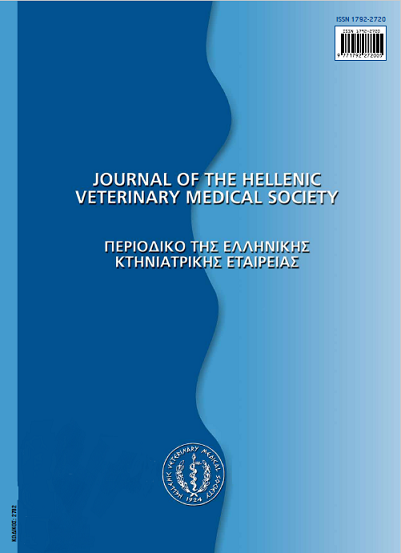Chlamydial infections in swine industry and their significance
Abstract
Chlamydial infections in animals, particularly those in ruminants and poultry, have been well studied for the last decades. However, no much information exist on such infections in pigs. This paper reviews the recent knowledge in various countries as well as in Greece on the role of the microorganism on causing disease in swine with emphasis on pathogenesis, epizootiology and diagnosis. Particular attention is given on the newly-described chlamydial strains as well as the recent experimental information and views which implicate the microbe as pathogen. Finally, some measures with respect the prevention and control against Chlamydiae are suggested for the Greek pig industry.
Article Details
- Zitationsvorschlag
-
KRITAS (Σ.Κ. ΚΡΗΤΑΣ) S. K., SAOULIDIS (Κ. ΣΑΟΥΛΙΔΗΣ) K., TSINAS (Α. ΤΣΙΝΑΣ) A., PAPADOPOULOS (Ο. ΠΑΠΑΔΟΠΟΥΛΟΣ) O., & KYRIAKIS (Σ.K. ΚΥΡΙΑΚΗΣ) S. K. (2018). Chlamydial infections in swine industry and their significance. Journal of the Hellenic Veterinary Medical Society, 49(1), 11–15. https://doi.org/10.12681/jhvms.15733
- Ausgabe
- Bd. 49 Nr. 1 (1998)
- Rubrik
- Review Articles

Dieses Werk steht unter der Lizenz Creative Commons Namensnennung - Nicht-kommerziell 4.0 International.
Authors who publish with this journal agree to the following terms:
· Authors retain copyright and grant the journal right of first publication with the work simultaneously licensed under a Creative Commons Attribution Non-Commercial License that allows others to share the work with an acknowledgement of the work's authorship and initial publication in this journal.
· Authors are able to enter into separate, additional contractual arrangements for the non-exclusive distribution of the journal's published version of the work (e.g. post it to an institutional repository or publish it in a book), with an acknowledgement of its initial publication in this journal.
· Authors are permitted and encouraged to post their work online (preferably in institutional repositories or on their website) prior to and during the submission process, as it can lead to productive exchanges, as well as earlier and greater citation of published work.












